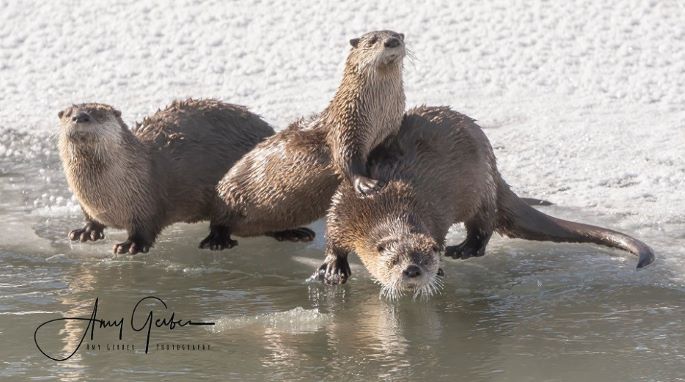
Winter Photography in Cody Yellowstone
CODY, Wyo., Nov. 10, 2022 – With endless forests, valleys, frosty wildlife and snow-covered trees, winter is prime time for outdoor photography in and around Yellowstone National Park.
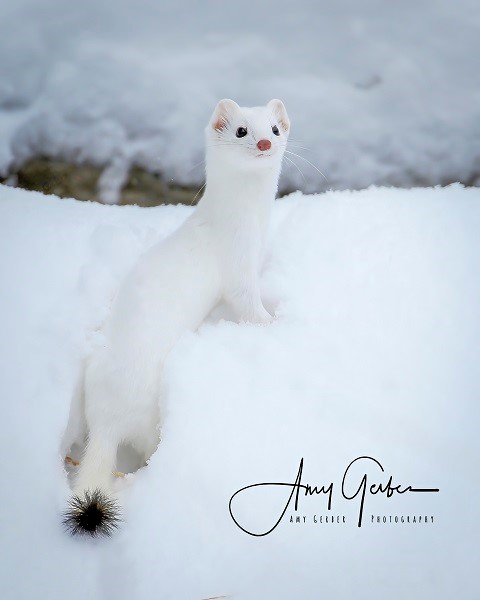 Photographers come from around the world to capture winter-season images from the world’s first national park and surrounding regions such as Cody Yellowstone, the region to the east of the park that includes the gateway community of Cody, parts of the park and the Shoshone National Forest, the world’s first national forest.
Photographers come from around the world to capture winter-season images from the world’s first national park and surrounding regions such as Cody Yellowstone, the region to the east of the park that includes the gateway community of Cody, parts of the park and the Shoshone National Forest, the world’s first national forest.
“There is a reason locals call Cody Yellowstone a ‘winter wonderland,’” said Ryan Hauck, executive director of Cody Yellowstone. “With endless frosty landscapes, abundant wildlife and strange, geothermal-related formations, Cody Yellowstone should be on every photographer’s top destination list.”
What to Know About a Photo Trip to Cody Yellowstone in Winter
Photographers should be prepared for the impact of extremely cold weather on equipment and bodies. Depending on the location in the region, temperatures can dip far below zero.
Experienced winter photographers recommend a selection of long lenses and wide-angle lenses as well as a tripod that will not freeze in cold temperatures. Photographers should also pack extra batteries since cold weather can drain camera and phone batteries more quickly than normal. Some photographers recommend special cold-weather camera bags with extra insulation.
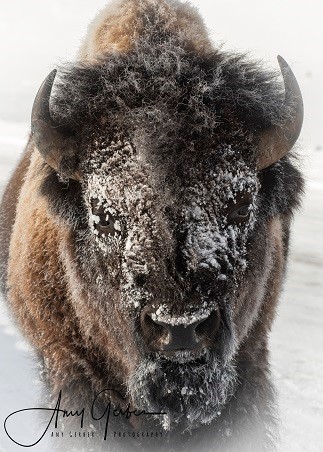 Appropriate clothing is also essential. Photographers should wear and bring plenty of layers, thick gloves and head- and ear- coverings, as well as good boots and insulated socks.
Appropriate clothing is also essential. Photographers should wear and bring plenty of layers, thick gloves and head- and ear- coverings, as well as good boots and insulated socks.
Photographers staying in Cody will find an array of stores with a broad selection of last-minute gear and other outdoor essentials.
Where to Go
Photographers seeking to shoot dramatic landscapes and winter wildlife will find plenty of options in Cody Yellowstone. From Cody, the 52-mile Buffalo Bill Scenic Byway leading to the East Gate to the park offers abundant possibilities including natural landscapes, man-made architectural features, wildlife and active shots of adventurers skiing, snowshoeing and ice-climbing.
Photographers wishing to travel into the park can take a guided one- to three-day snowmobile tour into the park with Gary Fales Outfitting or rent snowmobiles by the day for self-guided tours. Skiers can be viewed at Sleeping Giant Ski Area and the Wood River Valley Ski Touring Park.
Wildlife
A huge array of wildlife can be photographed during the winter season, and often, the critters display much different behavior than they do during other seasons.
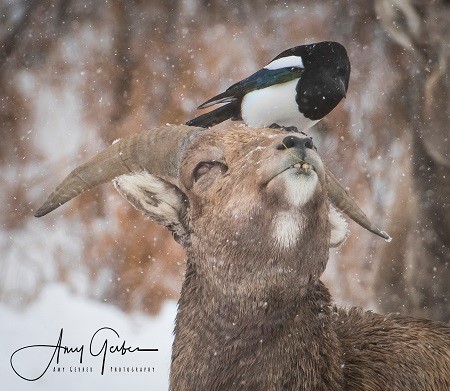 Examples:
Examples:
- Bison forage for food beneath the snow, and they can sometimes be seen with large clumps of snow and ice dangling from their chin hair. These oddly shaped “snowball beards” dangle precariously from a bison’s jaw until the weight forces them to break off, sometimes taking fur with them.
- Ermines – which are short-tailed weasels – change color in the winter. Measuring eight to 13 inches, an ermine’s fur is typically brown on top and white on the bottom in the summer. During the winter, these agile creatures are all white. Ermines can leap repeatedly up to three times their length, presenting great opportunities for action shots.
- Tiny-but-fierce pygmy owls weigh only two ounces but they can take on prey up to three times their size. They hunt in the daylight by sitting still in trees and surprising small songbirds.
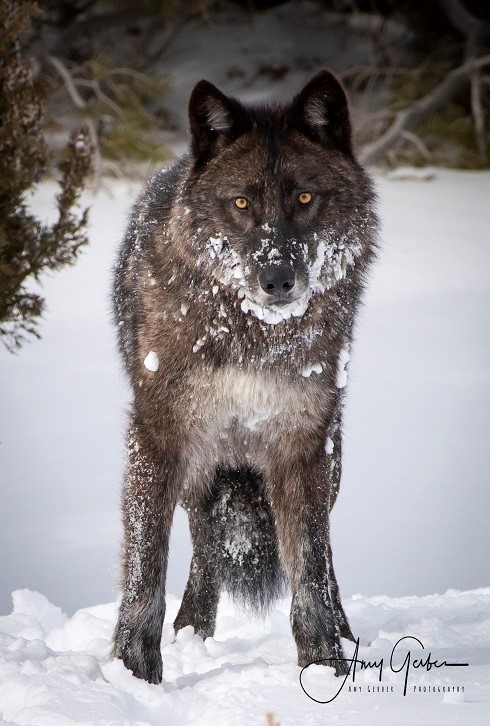 River otters are most agile in the winter when they rapidly move through the ice and snow by hopping and sliding at speeds up to 15 miles per hour. They can also swim up to six miles per hour for up to three minutes at a time, using their long whiskers to help them find prey like fish and small mammals.
River otters are most agile in the winter when they rapidly move through the ice and snow by hopping and sliding at speeds up to 15 miles per hour. They can also swim up to six miles per hour for up to three minutes at a time, using their long whiskers to help them find prey like fish and small mammals.
- The winter coats of Rocky Mountain bighorn sheep are generally lighter and much thicker in the winter. These massive creatures shed their heavy coats in the summer.
- Wolves are among the most adaptable wildlife species in the region. Unlike many other critters, wolves don’t need to adapt to winter temperatures at all because of their unique two layers of fur. Their outer-layer guard hairs are up to four inches in length, which protects wolves from the elements, while their undercoat offers a soft layer of insulation.
- Wild Mustangs freely roam the McCullough Peaks wilderness area the way they have ever since Buffalo Bill Cody settled in the region. In fact, the horses are believed to be descendants of the legendary showman’s Wild West Show horses. Wild horses have a more compact and thicker build than domestic horses to help them survive in the wild.
- Thanks to their huge windpipes and large heart, pronghorns are the fastest land mammals in North America, capable of springing 60 miles-per-hour. In the winter, these fascinating critters migrate to the northern part of the park. Herds are more all-inclusive in the winter, with all ages and both genders roaming together during the coldest months. Come spring, the herds split into all-female herds, young bachelor male herds and older, solitary bucks.
Landscape
The region also features unique winter-only anomalies that keep photographers outside all day long. Examples:
- When the conditions are just right, visitors will see light-reflecting ice crystals, sometimes called ice fog, floating in the air, giving the illusion of a fog. As the crystals drift through the air, they become natural – and breathtaking – sun-catchers as they reflect the sun’s rays.
- During the winter, rime from hydrothermal mist accumulates on the branches of trees. When combined with falling snow, trees take on an eerie appearance and are known as “ghost trees.” These much-photographed trees are stunning to behold, but they can eventually cause tree limbs to break.
- Animal tracks in the snow can tell a compelling story about what has recently happened, and photographers can easily illustrate these stories with snow-track images. A wide range of animals leave tracks in the snow, including bison, elk, coyotes, fox and wolves.
- Hoarfrost is a rare, feathery frost that occurs when water vapor forms in subzero temperatures. The resulting frost sticks to all kinds of surfaces including trees, rocks and even snow.
- The region’s powerful winter wind blows snow around like dust, and the resulting drifts, patterns and formations result in eerily symmetrical snow sculptures.
- Snow mirrors. Shiny, icy patches of snow form when the snow melts slightly and then refreezes, creating a smooth, reflective surface. When conditions are right, entire fields and mountains can appear shiny and reflective from a distance.
- Thanks to the region’s dark night skies, it is possible to see starlight shadows created by starlight alone. The winter snow cover helps create the perfect surface for the shadows. The shadows can be faint, so photographers must allow enough time away from other light to let their eyes adjust.
This article’s photography is provided by Amy Gerber of Cub Creek Photography. If you would like to see more of the amazing photography that can be captured in the area, or if you are interested in purchasing a print, visit : https://openrangeimages.artstorefronts.com/amy-gerber or her social at https://www.facebook.com/CubCreekPhotography/”
###
Home of the Great American Adventure, Cody Yellowstone is comprised of the northwestern Wyoming towns of Cody, Powell and Meeteetse as well as areas inside of Yellowstone National Park and the valley east of the entrance. The region is known for rodeos, authentic guest and dude ranches, world-class museums and recreational adventures that reflect the adventurous spirit of the visionaries and explorers who brought the remote region to the world’s attention.
Related hashtags:
#CodyYellowstone
#WildWatch
#CodyWyoming
#CenteroftheWest
#BuffaloBill
#Yellowstone
#ThatsWY
#OutsideYellowstone
Media contact:
Mesereau Travel Public Relations
720-284-1512
